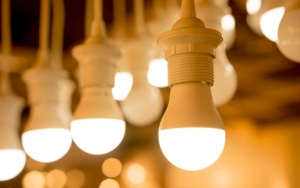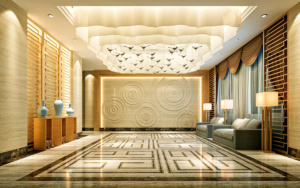The history of electric lighting dates back to the 18th and 19th centuries, when the pioneers of the field began experiments with candles and kerosene lamps. Among them were Sir Humphrey Davy and Warren de la Rue. to create an electric lamp, 19th At the beginning of the century, they experimented (arc lamps), however these early electric lamps were not practical for widespread use due to high power consumption and other limitations.

in 1879, Thomas Edison is credited with inventing and widely introducing the practical incandescent light bulb (the classic, barbarian bulb). This was a major advance in electric lighting, providing a more energy-efficient and long-lasting alternative to gas and kerosene lamps.
20th At the beginning of the century, fluorescent lamps were developed, which became popular due to their higher energy efficiency compared to incandescent lamps. Gradually replacing incandescent light bulbs, fluorescent lighting has been widely implemented in commercial and industrial settings.
LEDs (LED) lamps 2000 It has appeared for years. They represent a major breakthrough in electric lighting. Highly energy-efficient, long life and availability in different colors – thanks to these features, this type of lighting gradually gained popularity. Manufacturers expanded the choice of colors and reduced the price, which attracted the attention of buyers en masse. LED lighting has become the dominant technology for both residential and commercial lighting. Types of LED lighting today replace standard light sources and are characterized by eco-friendliness.

Smart lighting system Since the 2010s appeared and allows users to control and configure lighting through mobile applications or voice commands. New technology has given us many possibilities, including being able to change colors, adjust to our schedule, etc.
The journey from the early experiments of arc lamps to the widespread use of energy-efficient LED lighting well illustrates man's ongoing efforts to reduce environmental impact. Also, the user's control over the lighting systems has been strengthened and created more comfort.

The lighting revolution
The invention of the light bulb completely changed the way people live, allowing us to have more abundant light sources at night and increasing the time for work, study, entertainment and other activities. The invention of the light bulb led to technological progress and many new ventures.
Today, we have different types of lighting, including incandescent, fluorescent, halogen, xenon lamps, LED lights, etc. Each of them has different characteristics, advantages and disadvantages and can be used for different scenarios. For example, incandescent light bulbs are cheap but have a short lifespan. As for LED lamps, they have a higher price, but longer operation and energy efficiency. they can 4-7 times reduce electricity costs compared to fluorescent and traditional sources and do not require special maintenance.

Lighting technology continues to evolve. In the future, more attention will be paid to sustainability and environmental protection in the design and production of lamps. It is based on a more energy efficient, environmentally friendly, intelligent and comfortable future.
Modern lighting and buildings
Modern lighting devices are used for different purposes in different types of buildings, including offices, shops, warehouses and factories, along with housing. Lighting should increase productivity, reduce staff fatigue and ensure the safety of the work process. Consequently, the lighting design of industrial buildings and indoor working environments is subject to increased requirements for reliability and functionality. Today there is already a trend and manufacturers of modern lighting systems develop products that serve, for example, a specific field of production. This allows the user to select luminaires according to the technical and operational requirements of specific projects.

Today, LED solutions are widely used for many reasons: they are adapted to any conditions and have a high safety margin, they are reliably protected from external destructive factors, which contributes to their long-term use. For example, when choosing lighting devices, it is necessary to take into account the conditions in which they will have to work. In the case of a production process, it may be associated with the generation of large amounts of dust or the release of moisture. with adaptation to high and low temperature conditions, as well as vibration not to affect the quality of their work, etc.
I will tell you more about the design and arrangement of lighting systems for different types of buildings in the next blog.
You can see an interesting article about electricity on this link too.

